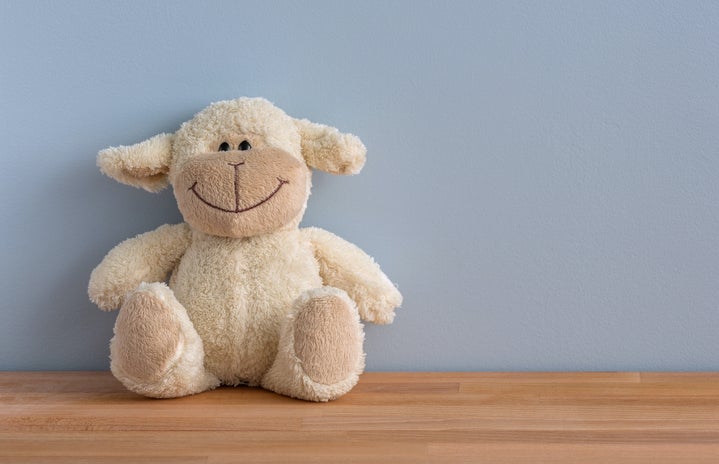Did you have a stuffed animal growing up? One that you held close and took everywhere you went? But as time went by and you grew older, you placed it aside until it finally disappeared from your life completely. But what if you never put it away? What does that say about you?
These toys first arrive in our lives as transition objects. It helps us transition as babies from being attached to our mother to being independent. The object is usually chosen spontaneously by the child, and it is soft and it can be stroked and cuddled; they are usually a blanket or a plush toy. It can represent the security that a child has in familiar and secure places, such as their room. Usually, the child will grow out of this object once the child has found other ways to deal with the separation from their mother.
But some children still keep them long after this all the way to adulthood. Researching the topic, I found something that surprised me. In the year 2017, the company Build-a-Bear Workshop did a survey in order to find out the number of adults with stuffed animals. Among the many results, the one that interested me said “56% of respondents have owned (and held onto) their favorite stuffed animal for more than two decades”. Another response that caught my attention was that 70% of the people surveyed answered that they would keep their stuffed animals for the rest of their lives. We can see that adults having and keeping these stuffed animals is more common than we thought.
I wanted to know the reason why many adults keep these toys. The therapist Margaret Van Ackeren had my answer. She stated, “In most instances, adults sleep with childhood stuffed animals because it brings them a sense of security and reduces negative feelings, such as loneliness and anxiety”. So, keeping these toys could actually help with your mental and emotional health, giving you the same sense of safety as when you were a child. They can also reduce stress by simply stroking them, producing the same effect as petting an animal. You should only start to worry about the relationship that you have with this toy if it starts affecting your daily life. For example: you do not travel because you cannot take it with you or if it damages relationships with others because you are ashamed or embarrassed by the toy. This is when you should start to separate yourself from it.
After reading all of this information, you should reflect on what is your relationship with your special toy. Ask yourself, is it a hindrance to your life? Does it limit your life experiences in any way? If you reply “no” to these questions, then the plush toy is a positive influence in your life and it can give you peace of mind.


